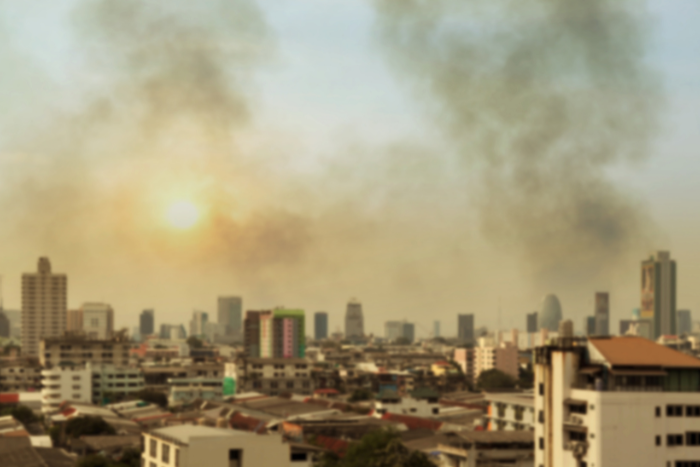An analysis has looked into the PM2.5 level trends in seven Indian cities, including Delhi and Mumbai, during the previous season of winter for the past two years
A recent study found that among seven major cities in the country, only Varanasi has met national standards for PM2.5 in the winter of 2022-23 and 2023-24. The city made progress despite being part of the Indo-Gangetic Plain (IGP) region, which is the most polluted in India.
An analysis by Climate Trends has looked into the PM2.5 level trends during the previous season of winter for the past two years. In heavily populated urban areas like major Indian cities, air pollution is a serious concern, especially in the winter when pollution levels frequently approach dangerous levels. The study covered seven major cities in India, including Mumbai, Varanasi, Patna, Delhi, Chandigarh, Lucknow, and Kolkata, for the years 2022-2023 and 2023-2024.
The report obtained air quality data for various cities from the Central Pollution Control Board (CPCB) website for October to February, covering 2022-23 and 2023-24.
PM2.5 scorecard
During the winter period (October-February), the months of January and February see lower pollution levels across the cities (except Chandigarh) than in October to December despite lower temperatures. This could result from other meteorological factors like wind speeds and fewer sources like crop burning in some states in north India.
In the comparative analysis of winter PM2.5 pollution levels across major Indian cities, Varanasi emerged as the sole city meeting national standards for both 2022-23 and 2023-24.
The study said that Mumbai also demonstrated pollution levels below the national standard but only in 2023-24. Delhi, however, consistently exhibited the highest pollution levels, followed by Chandigarh, with Patna showing comparatively higher concentrations attributed possibly to industrial emissions and vehicular traffic. Delhi experienced a notable increase in winter pollution levels compared to the preceding year. Other cities experienced lower PM2.5 levels during the recent winter.
In Delhi, the PM2.5 concentration exhibits significant fluctuations over time, with values ranging from relatively low (9.46) to very high (405.24) levels. However, despite fluctuations, the report found a general increasing trend in PM2.5 concentration over the observed period, especially noticeable in the later months.
Despite being the only city with PM2.5 concentrations lower than national standards, Varanasi showed a general increasing trend in PM2.5 concentration over the observed period/
According to the analysis, while the PM2.5 concentration in Lucknow exhibits significant fluctuations over time— with values ranging from relatively low (9.43) to very high (148.8) levels— pollution levels exceeded the national standard on most days.
No consistent trend was observed in Kolkata, the analysis found. In the winter of 2023-24, there was much uproar over Mumbai’s poor air quality days, but data showed that PM 2.5 levels in the city were lower this winter vis-a-vis 2022-2023.
Moving on to Chandigarh, the city exceeded the national standard for pollution on most days. Additionally, mid-December and January were the most polluted months for the city. Similarly, Patna xceeded the national standard for pollution on most days and the PM2.5 concentration in Patna exhibited significant fluctuations over time, with values ranging from relatively low (16.89) to very high (293.68) levels.
A number of variables, such as temperature inversions, stagnant air, increased emissions from heating sources, and contaminants that build up over time, aggravate winter pollution. High levels of PM2.5 and other pollutants are caused by these circumstances, endangering the health of locals—particularly those who are most susceptible, such children, the elderly, and people with underlying medical disorders.
Need for further research
In March, a global assessment by Swiss air quality technology company IQAir revealed that India was the third most polluted country in the world in 2023, with an average population-weighted fine particulate matter (PM) 2.5 concentration of 54.4 micrograms per cubic metre (μg/m3).
Now, as researchers look at particular Indian cities, experts have called for further research.
“Although cities show promising results, we need to demonstrate how much of the observed changes in PM2.5 can be attributed to reduced emission from local sources after incorporating meteorological impacts. Further deep dive is required to dissect the data in terms of local and regional factors,” said Dr. Sagnik Dey, Associate Professor, Center for Atmospheric Sciences, IIT-Delhi. Talking about designing potential solutions, Dr. Atenderpal Singh, Assistant Professor, Department of Environmental Studies, University of Delhi, said “The present study describes the current status of ambient PM2.5 across the seven Indian cities and it provides the baseline data. However, to plan any effective pollution mitigation strategies, it is important to understand the sources of PM2.5. So, the source apportionment studies should be one of the objectives of future studies.”
About The Author
You may also like
Air pollution levels lower than Indian norms causing deaths: Study
Air pollution second-biggest reason for deaths among young kids in South Asia: Study
Air pollution leading risk factor for death in South Asia, killed 2.6 million in 2021: Report
Haryana government to launch ₹10,000-crore project to combat air pollution
50% of new cars sold in 2023 globally were polluting SUVs, data shows


